North Korean architecture
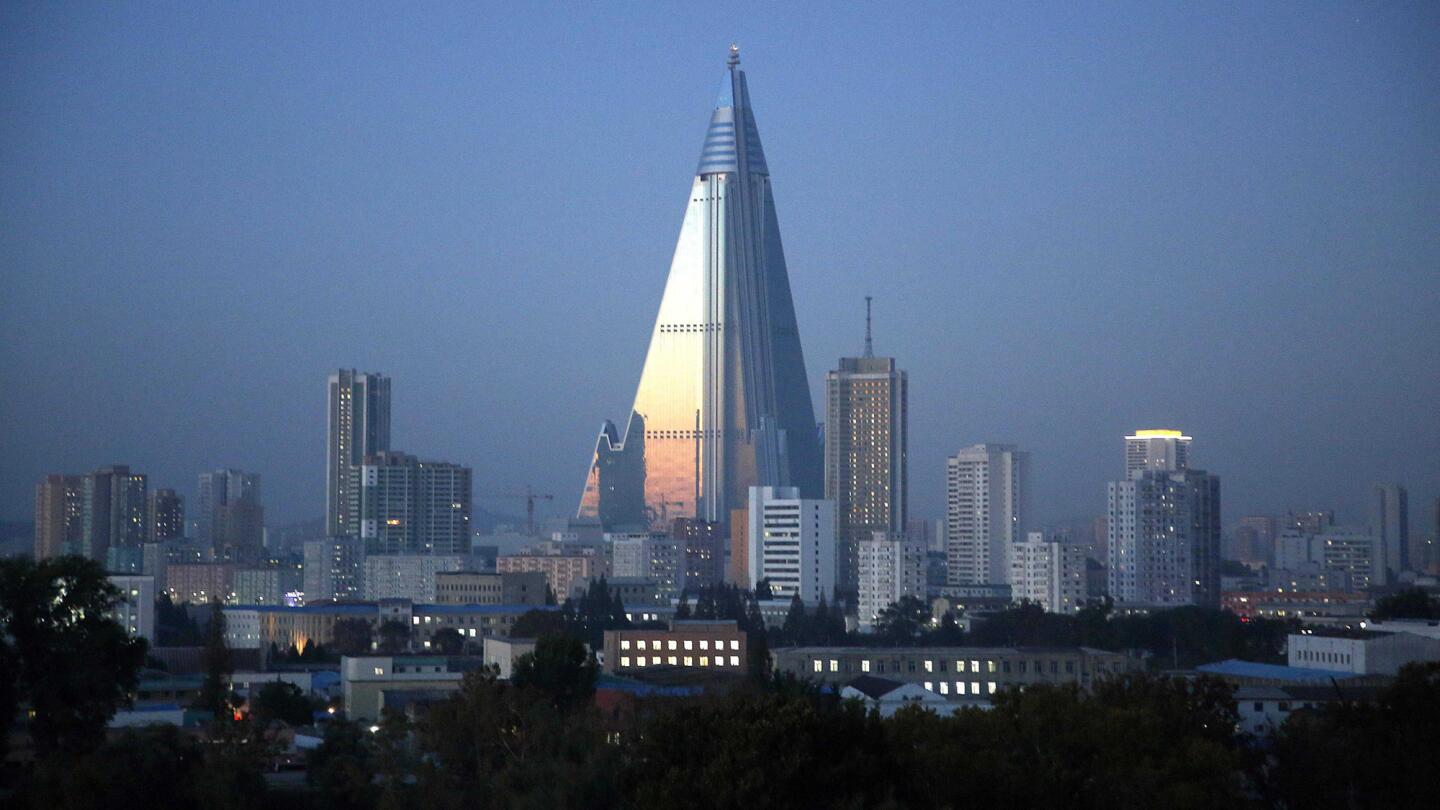
Dusk settles over Pyongyang, North Korea, as the 105-story pyramid-shaped Ryugyong Hotel towers over residential apartments. The landmark has been under construction since 1987 and was intended to be a symbol of progress and prosperity.
(Wong Maye-E / Associated Press)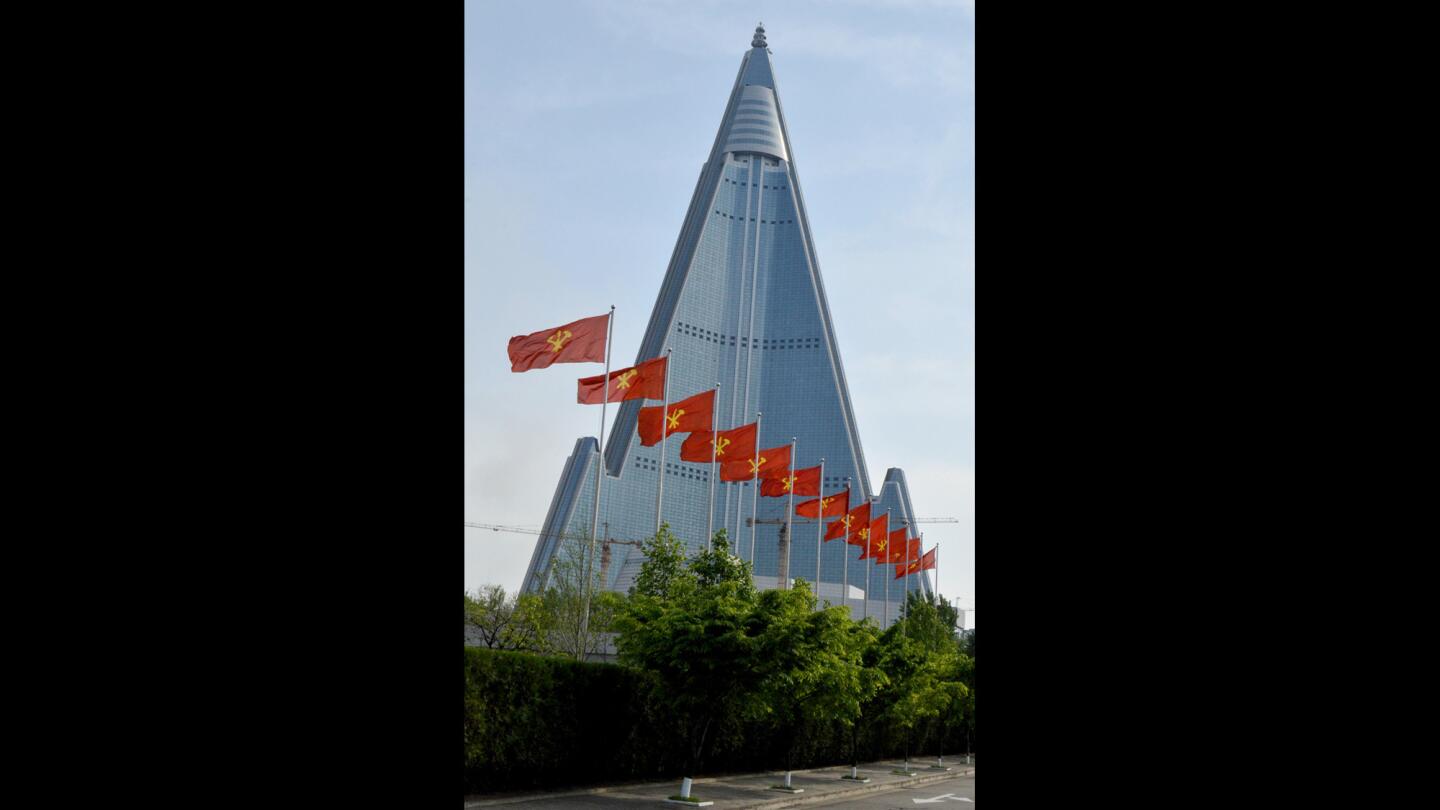
The unfinished Ryugyong Hotel, with party flags in front of it, in Pyongyang, North Korea.
(Julie Makinen / Los Angeles Times)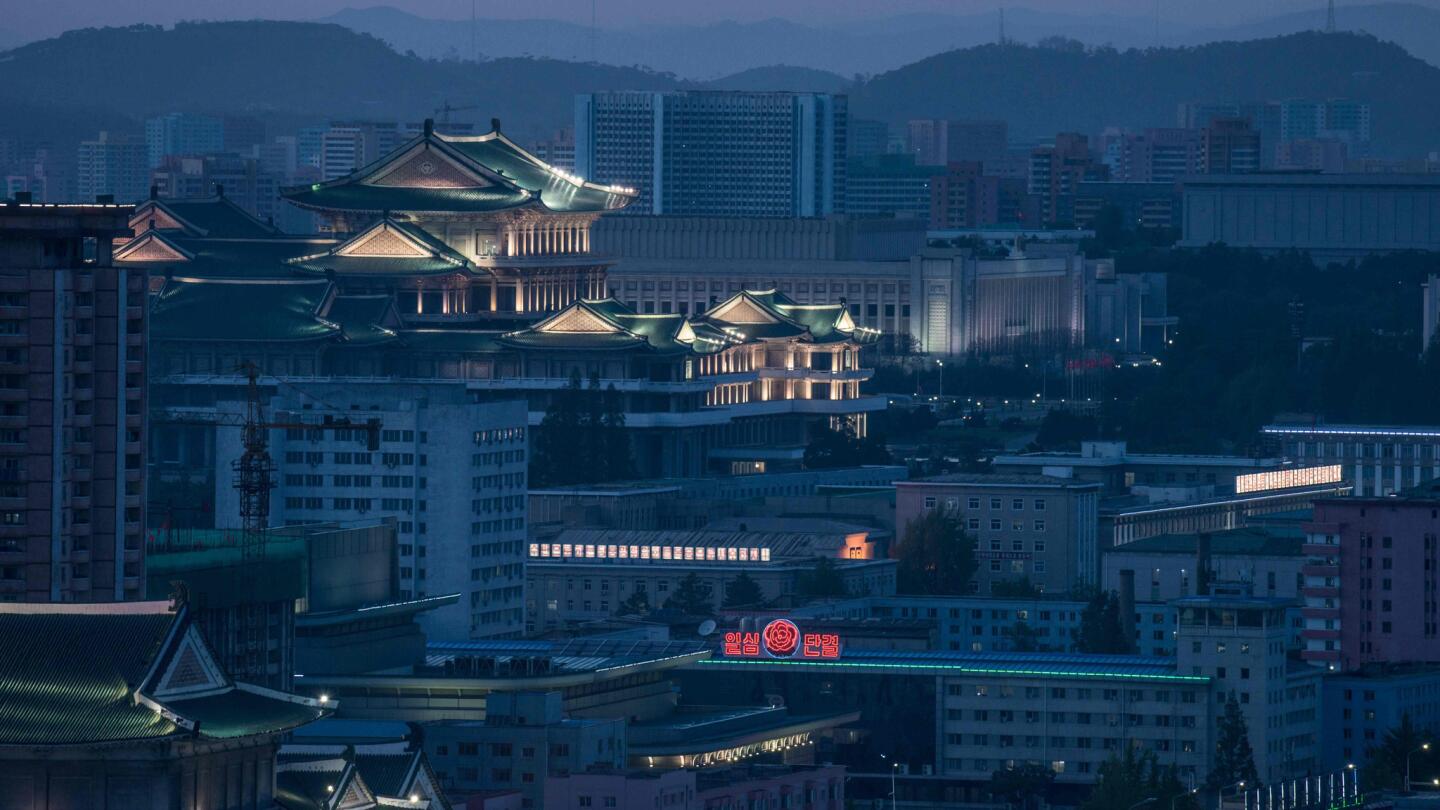
The Grand People’s Study House punctuates the Pyongyang landscape. The building is a library and study hall.
(Ed Jones / AFP/Getty Images)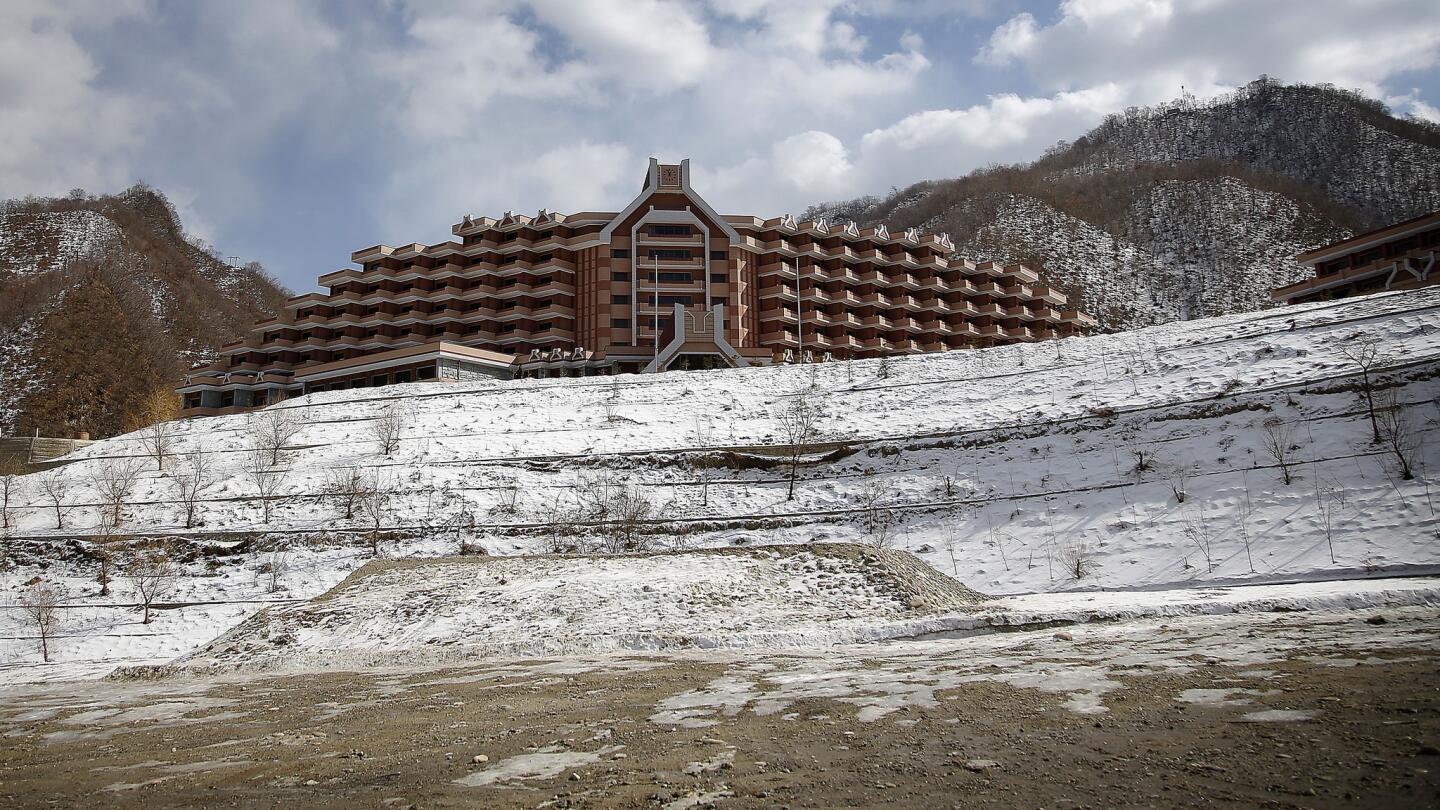
The hotel at the Masik Pass Ski Resort is nestled amid the hills in Wonsan, North Korea. The resort boasts the amenities of a First World ski destination -- a luxury hotel, upscale restaurants and a well-equipped, professionally staffed ski rental shop.
(Wong Maye-E / Associated Press)
Advertisement
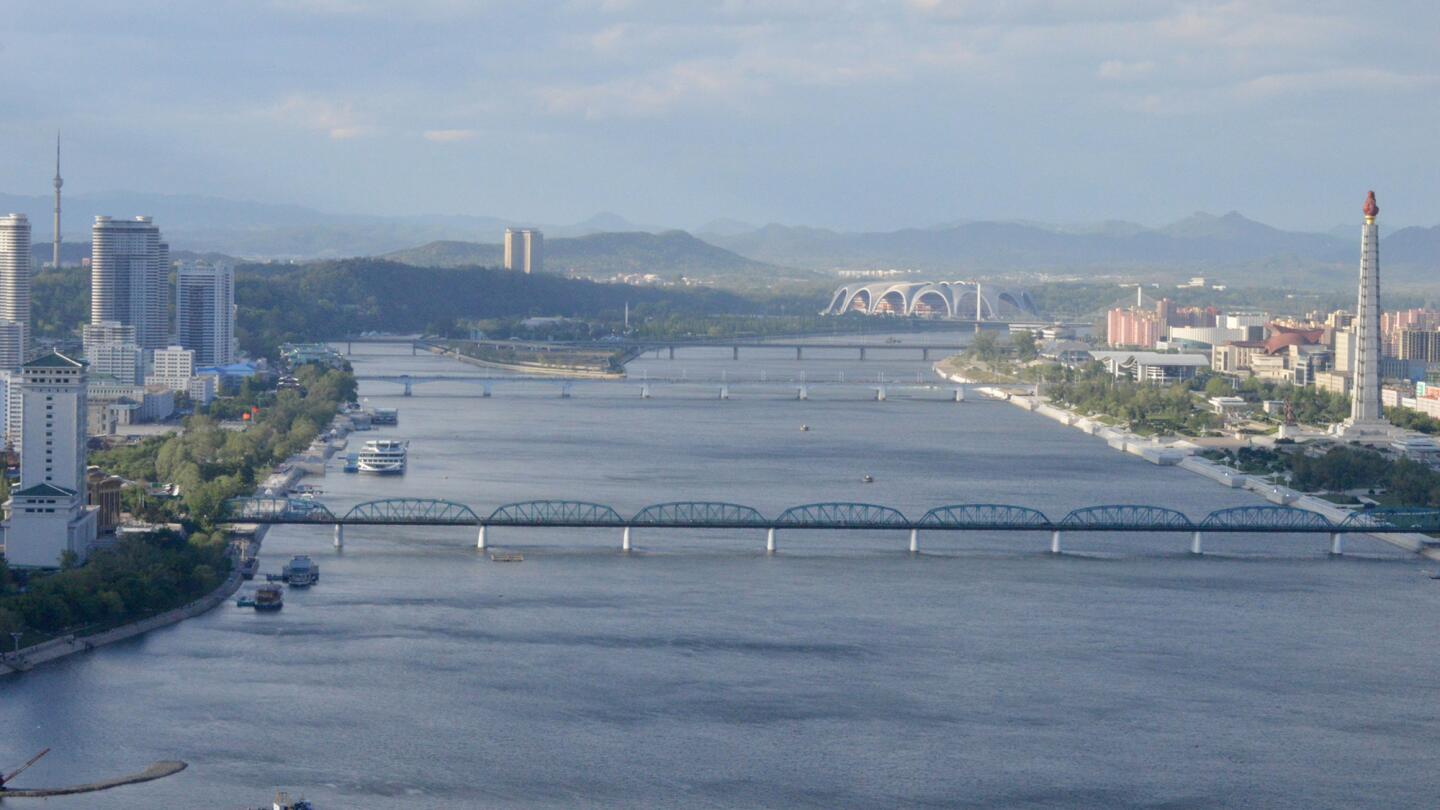
Pyongyang’s 150,000-seat May Day Stadium, built in 1989 and said to be the world’s largest, is visible in the distance. At right is the Juche Tower, built in 1982, topped with a red flame.
(Julie Makinen / Los Angeles Times)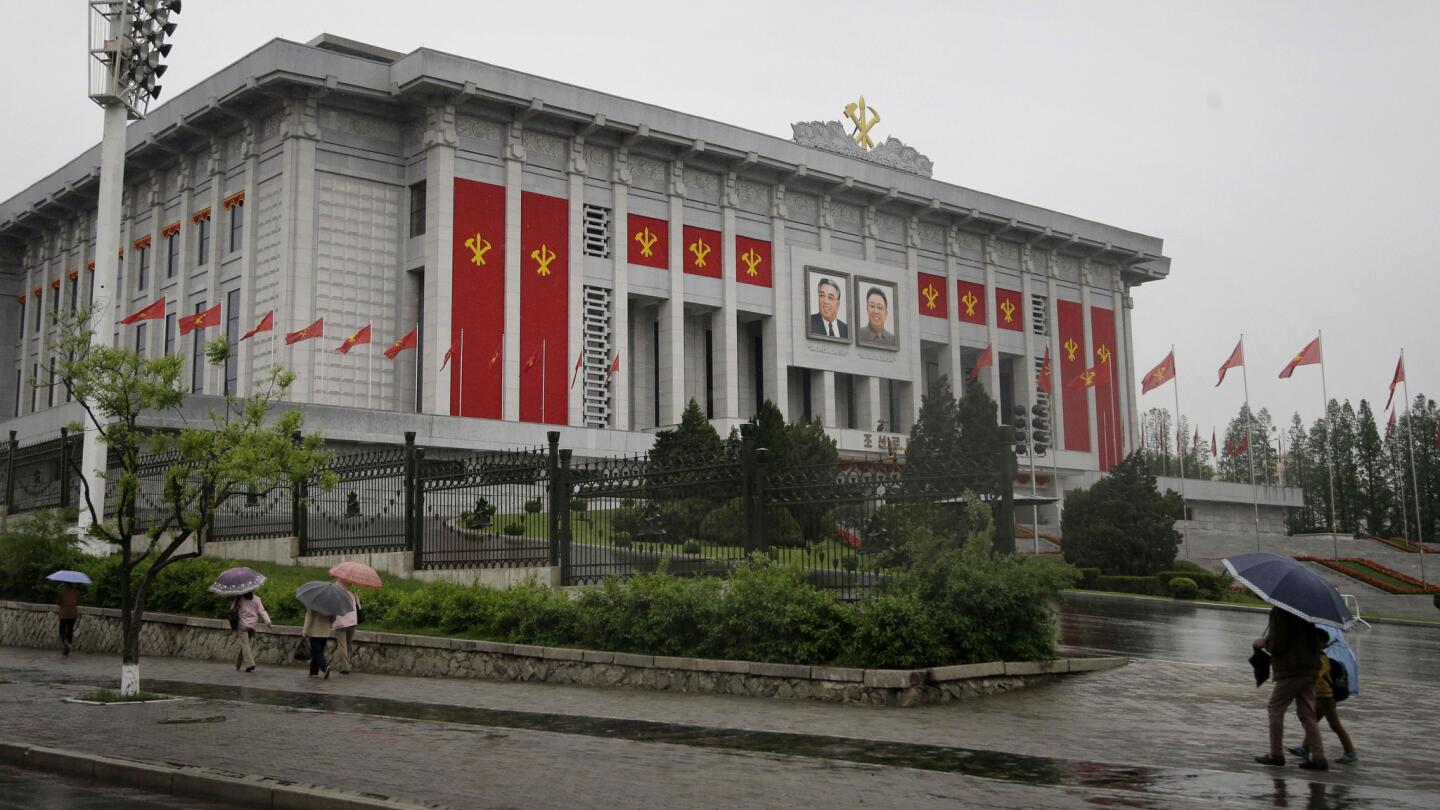
The April 25 House of Culture is decked out in the colors and flags of North Korea’s ruling Workers’ Party.
(Wong Maye-E / Associated Press)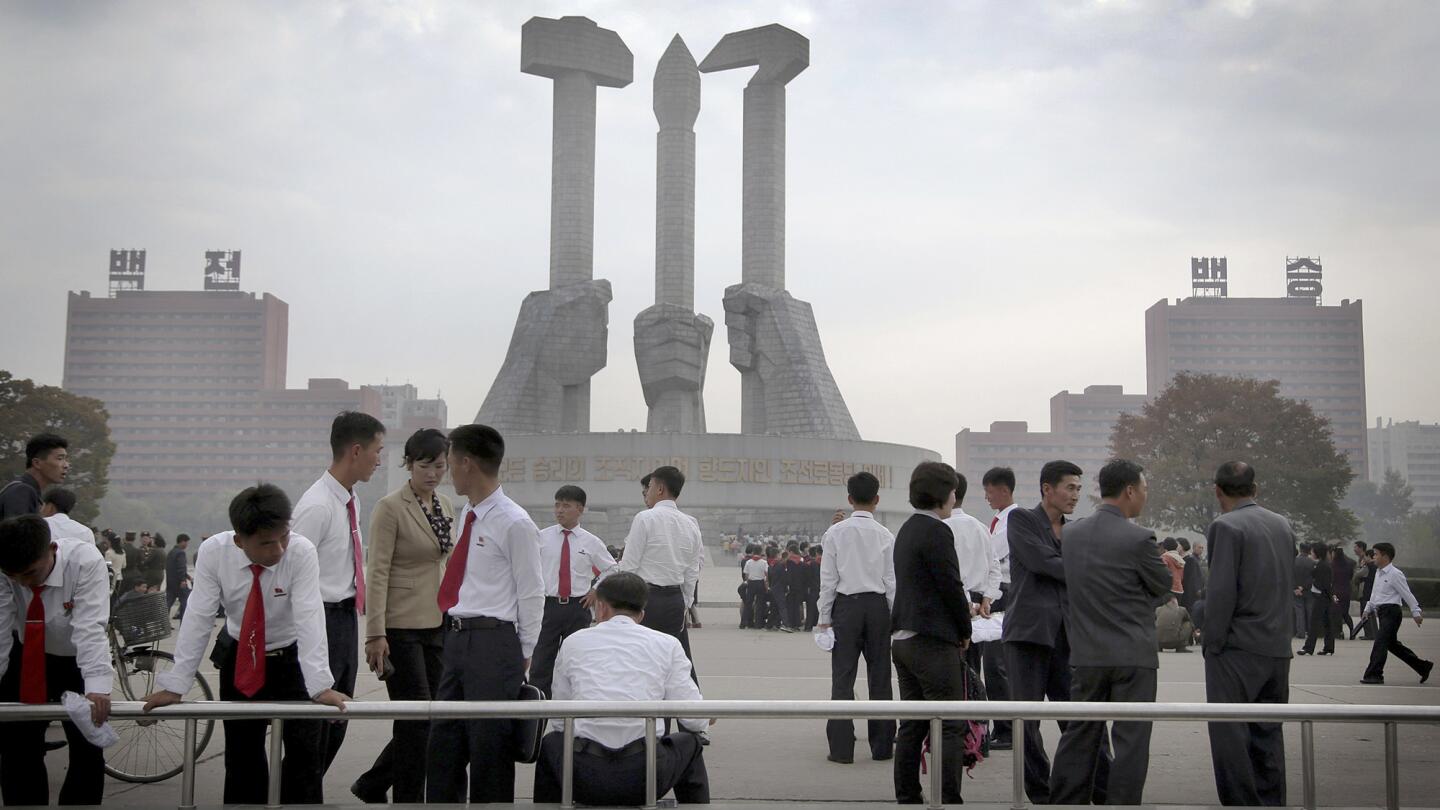
North Koreans gather at a monument honoring the Workers Party founding.
(Wong Maye-E / Associated Press)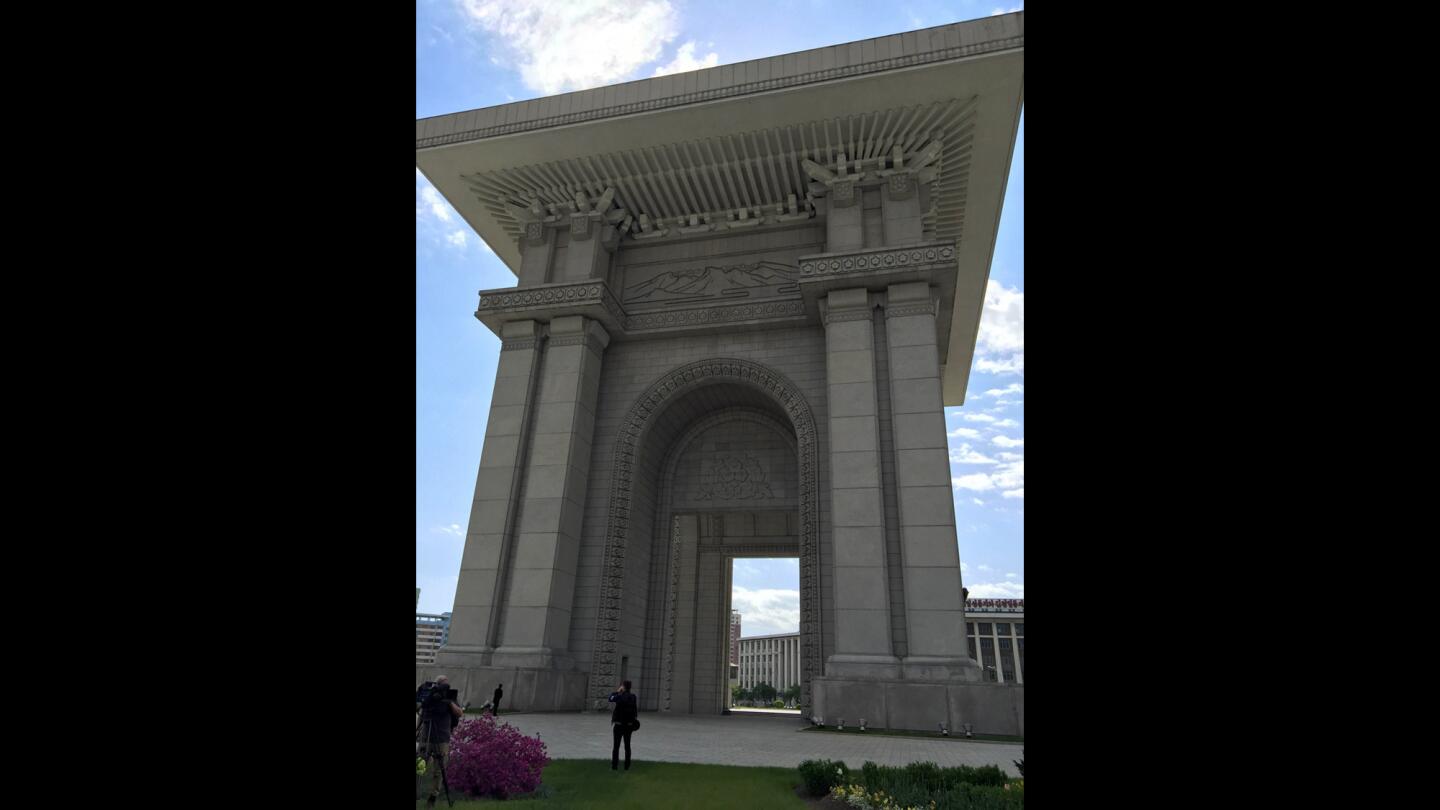
The Arch of Triumph in Pyongyang, built in 1982, stands 60 meters high -- intentionally surpassing the Arc du Triomphe in Paris. It marks Korea’s struggle against Japanese colonization.
(Julie Makinen / Los Angeles Times)Advertisement
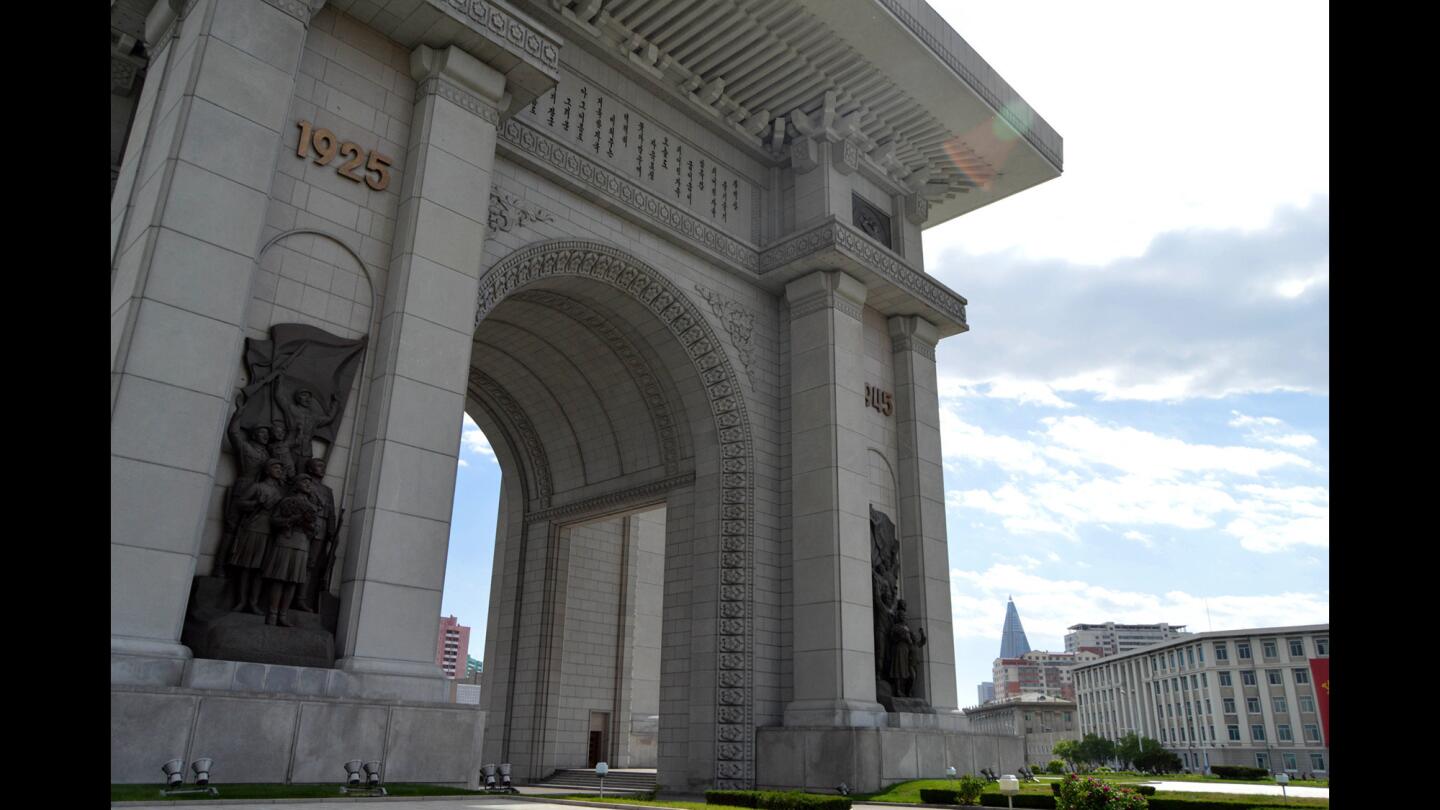
The Arch of Triumph in Pyonyang.
(Julie Makinen / Los Angeles Times)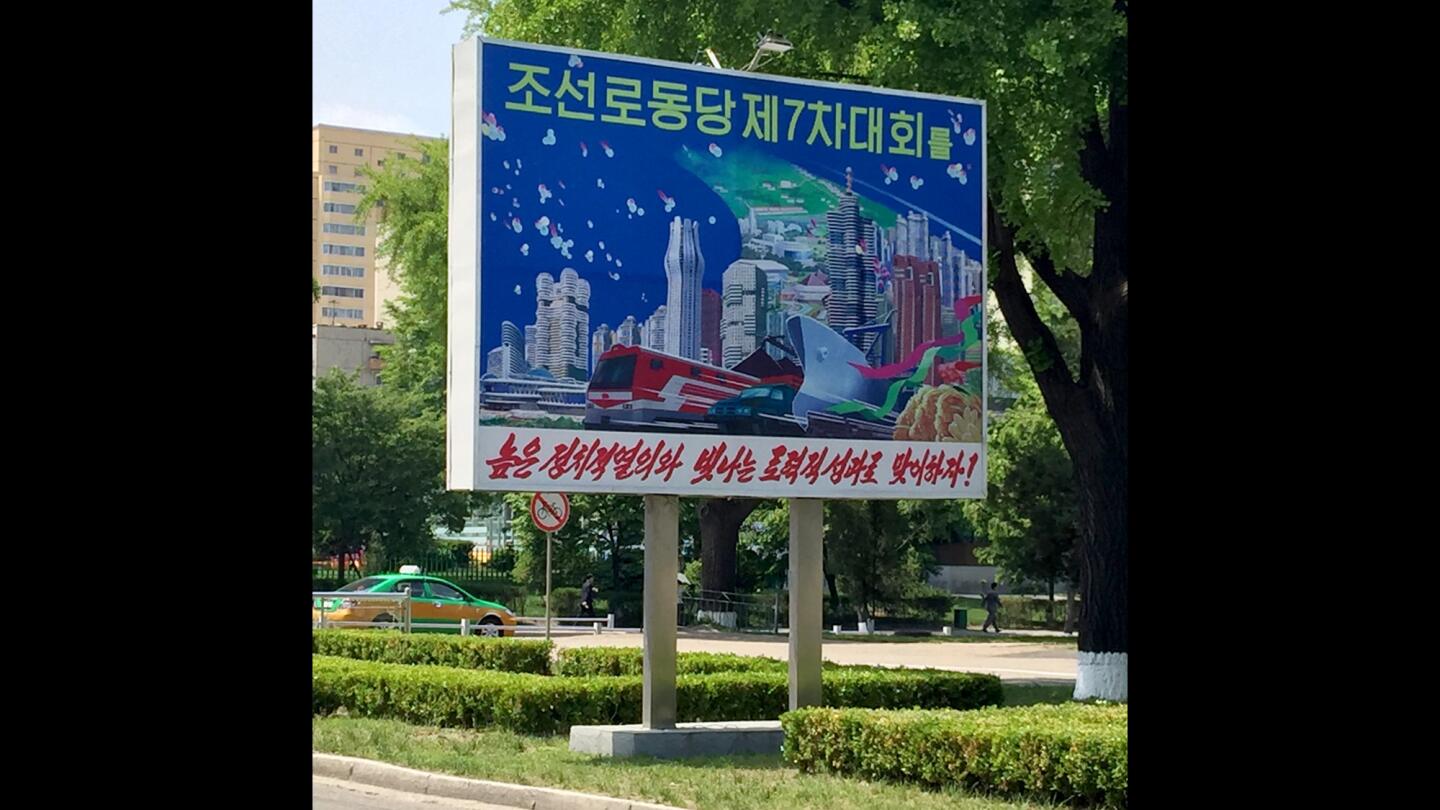
A propaganda billboard in the capital features futuristic buildings in Pyongyang, North Korea.
(Julie Makinen / Los Angeles Times)






